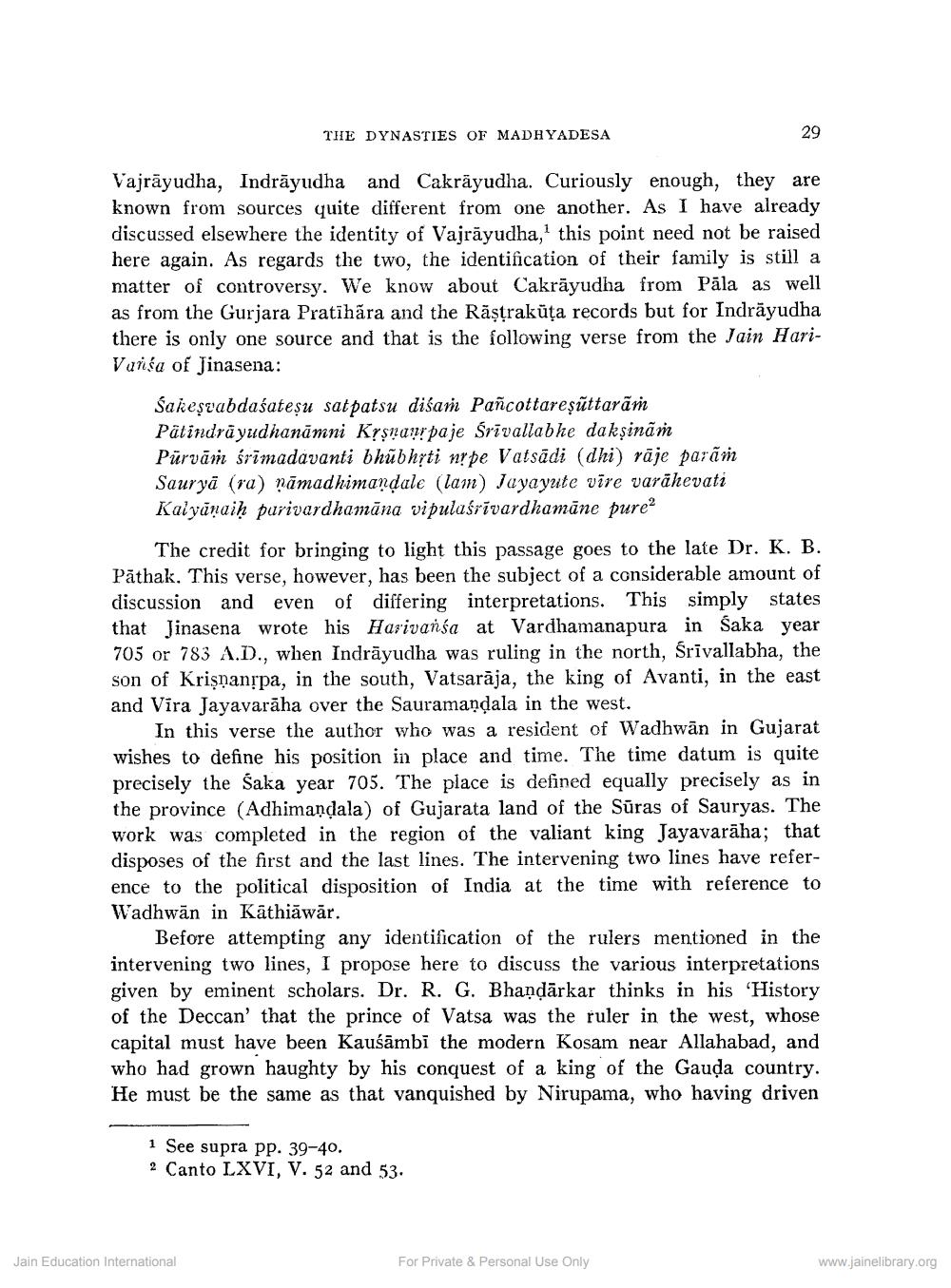________________
THE DYNASTIES OF MADHYADESA
29
Vajrāyudha, Indrāyudha and Cakrāyudha. Curiously enough, they are known from sources quite different from one another. As I have already discussed elsewhere the identity of Vajrāyudha,' this point need not be raised here again. As regards the two, the identification of their family is still a matter of controversy. We know about Cakräyudha from Pāla as well as from the Gurjara Pratīhāra and the Răstraküța records but for Indrāyudha there is only one source and that is the following verse from the Jain HariVansa of Jinasena:
Sakeșvabdaśateşu satpatsu diśam Pañcottareșūttarām Pätindrāyudhanāmni Krsnaar pa je Śrīvallabhe dakşinām Pürvām śrīmadavanti bhūbhịti nrpe Vatsādi (dhi) raje parām Sauryā (ra) nāmadhimandale (lam) Jayayute vire varähevati Kalyūnaiḥ purivardhamāna vipulasrivardhamāne pure?
The credit for bringing to light this passage goes to the late Dr. K. B. Pathak. This verse, however, has been the subject of a considerable amount of discussion and even of differing interpretations. This simply states that Jinasena wrote his Harivansa at Vardhamanapura in Saka year 705 or 783 A.D., when Indrāyudha was ruling in the north, Srivallabha, the son of Krişnanspa, in the south, Vatsarāja, the king of Avanti, in the east and Vira Jayavarāha over the Sauramandala in the west.
In this verse the author who was a resident of Wadhwan in Gujarat wishes to define his position in place and time. The time datum is quite precisely the Saka year 705. The place is defined equally precisely as in the province (Adhimandala) of Gujarata land of the Sūras of Sauryas. The work was completed in the region of the valiant king Jayavarāha; that disposes of the first and the last lines. The intervening two lines have reference to the political disposition of India at the time with reference to Wadhwān in Kathiāwār.
Before attempting any identification of the rulers mentioned in the intervening two lines, I propose here to discuss the various interpretations given by eminent scholars. Dr. R. G. Bhandārkar thinks in his 'History of the Deccan' that the prince of Vatsa was the ruler in the west, whose capital must have been Kaušāmbī the modern Kosam near Allahabad, and who had grown haughty by his conquest of a king of the Gauda country. He must be the same as that vanquished by Nirupama, who having driven
1 See supra pp. 39-40. 2 Canto LXVI, V. 52 and 53.
Jain Education International
For Private & Personal Use Only
www.jainelibrary.org




